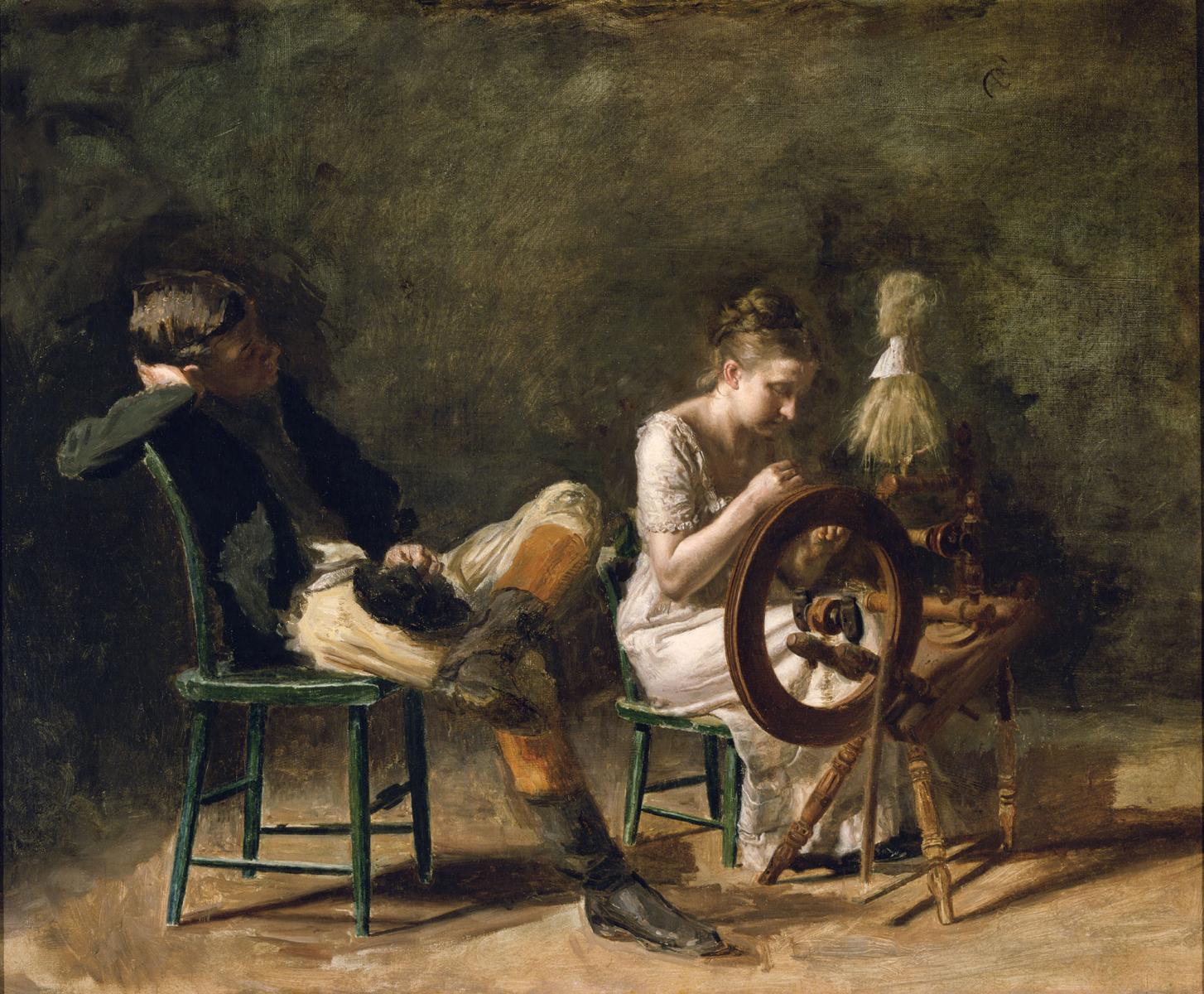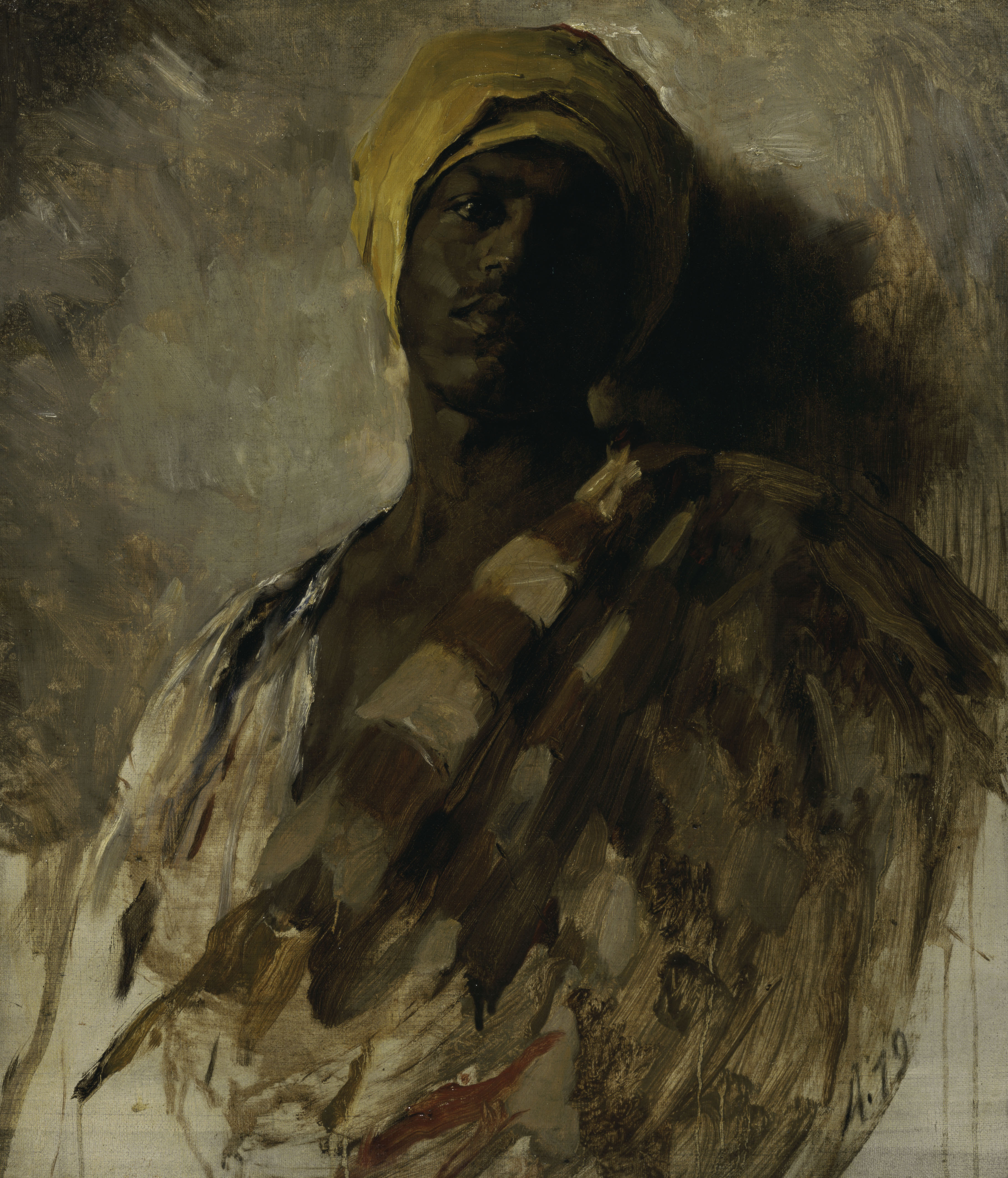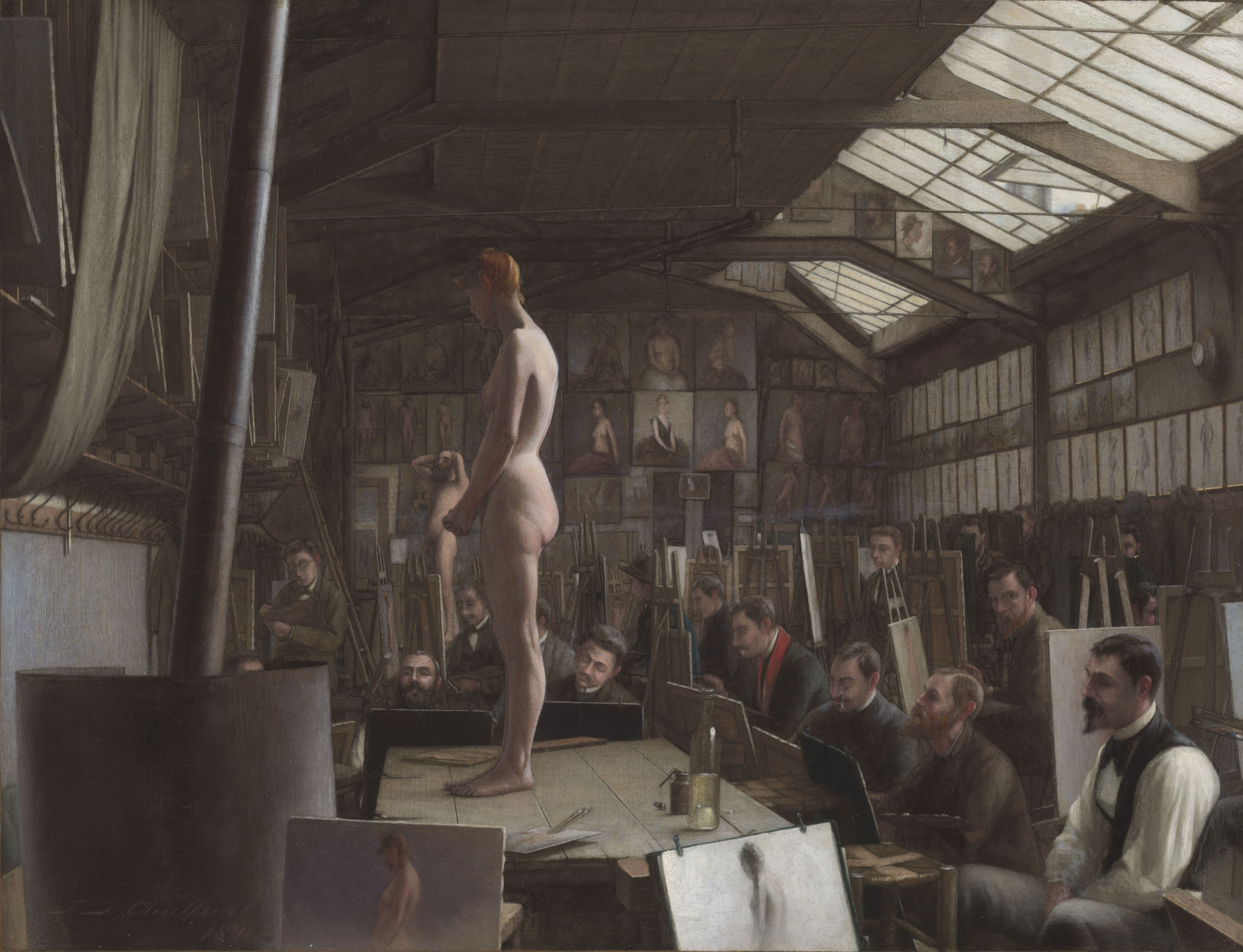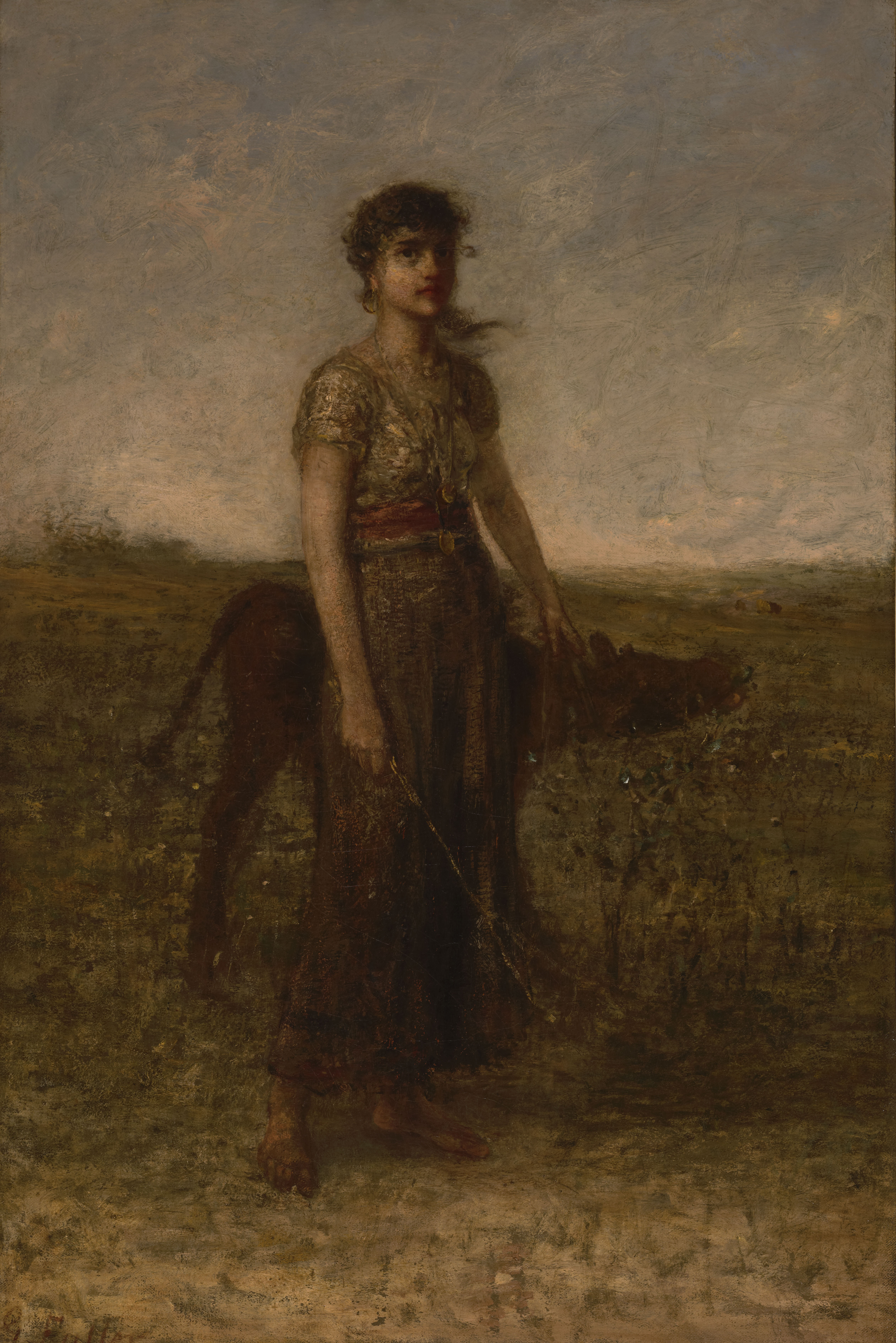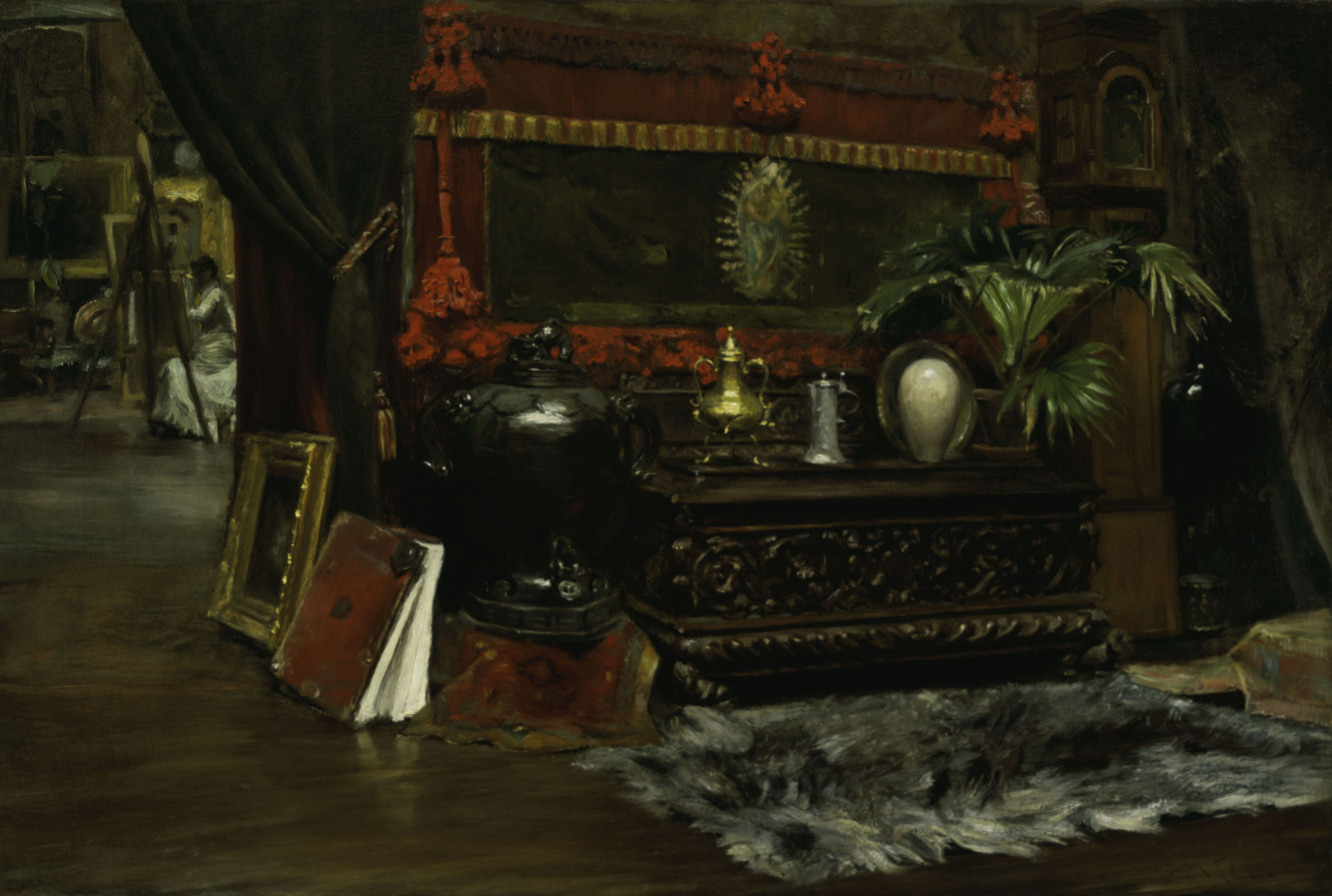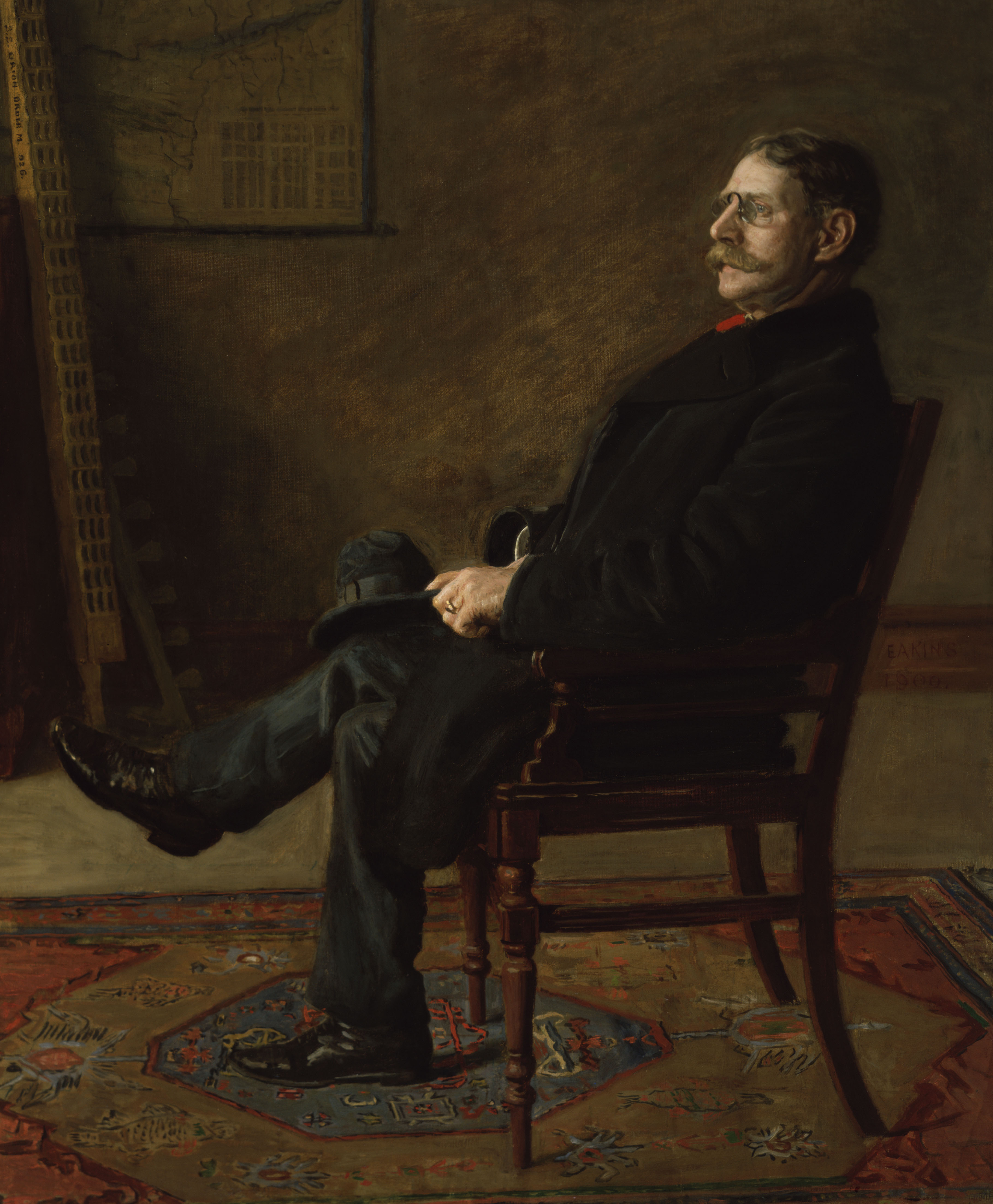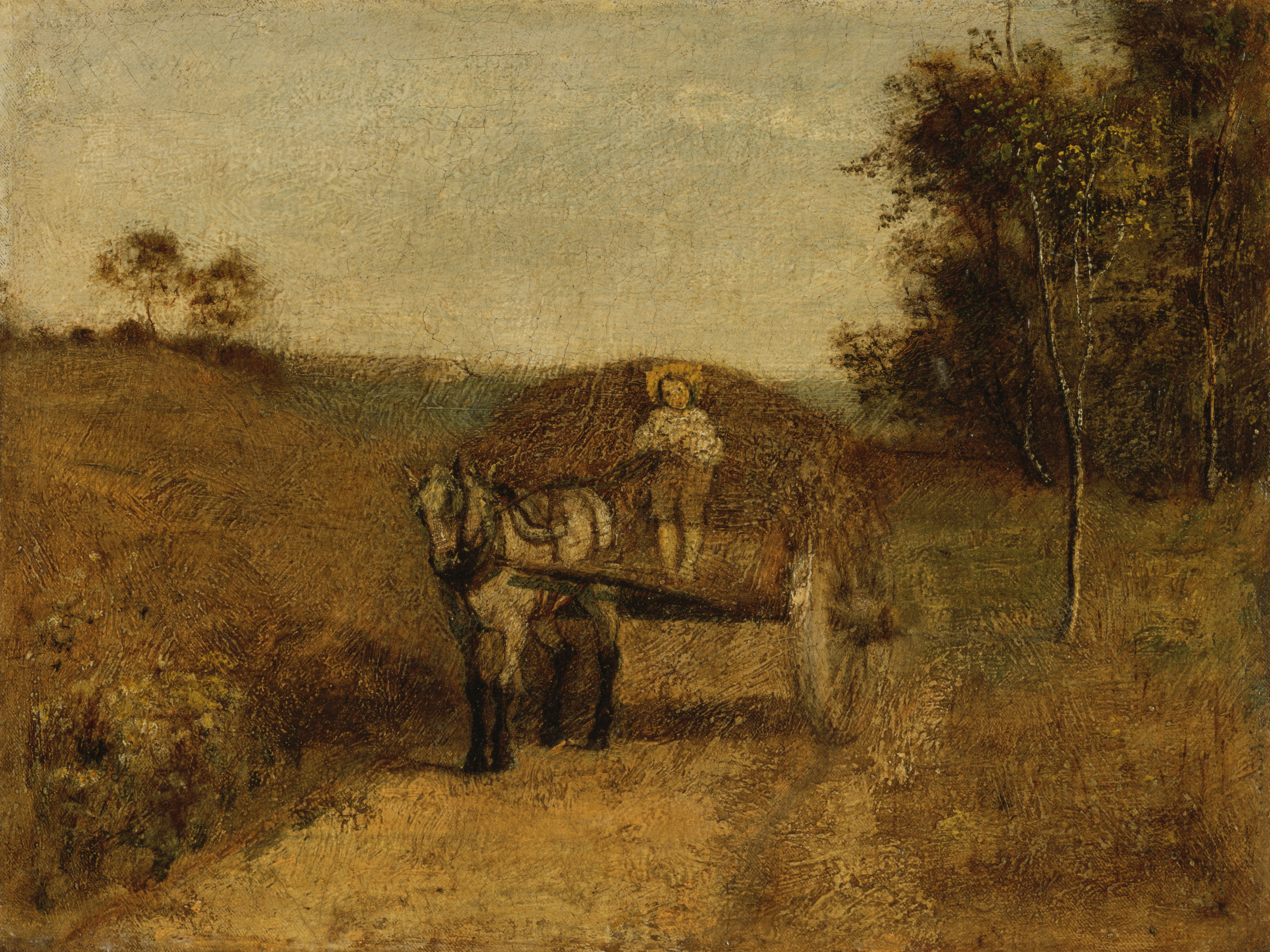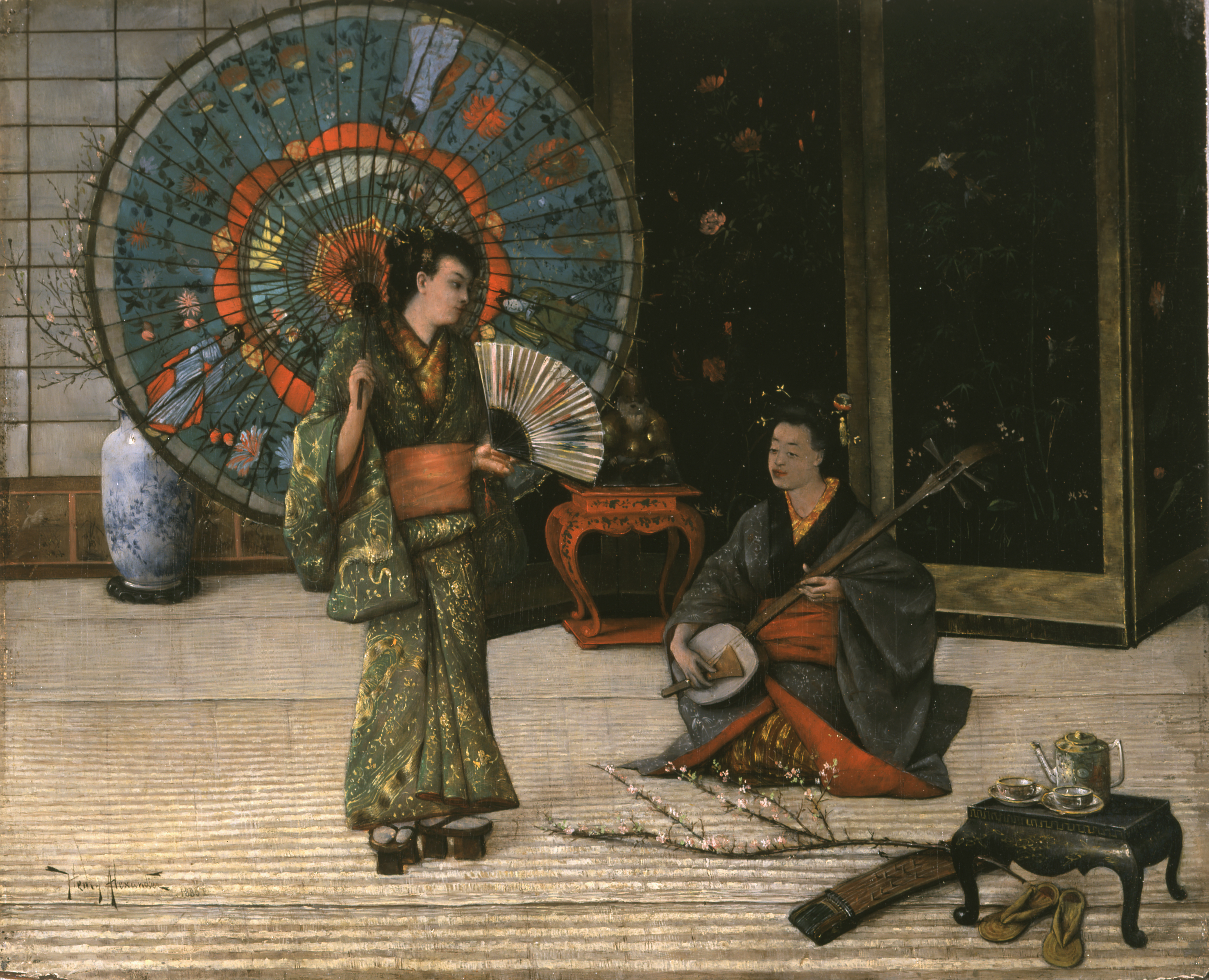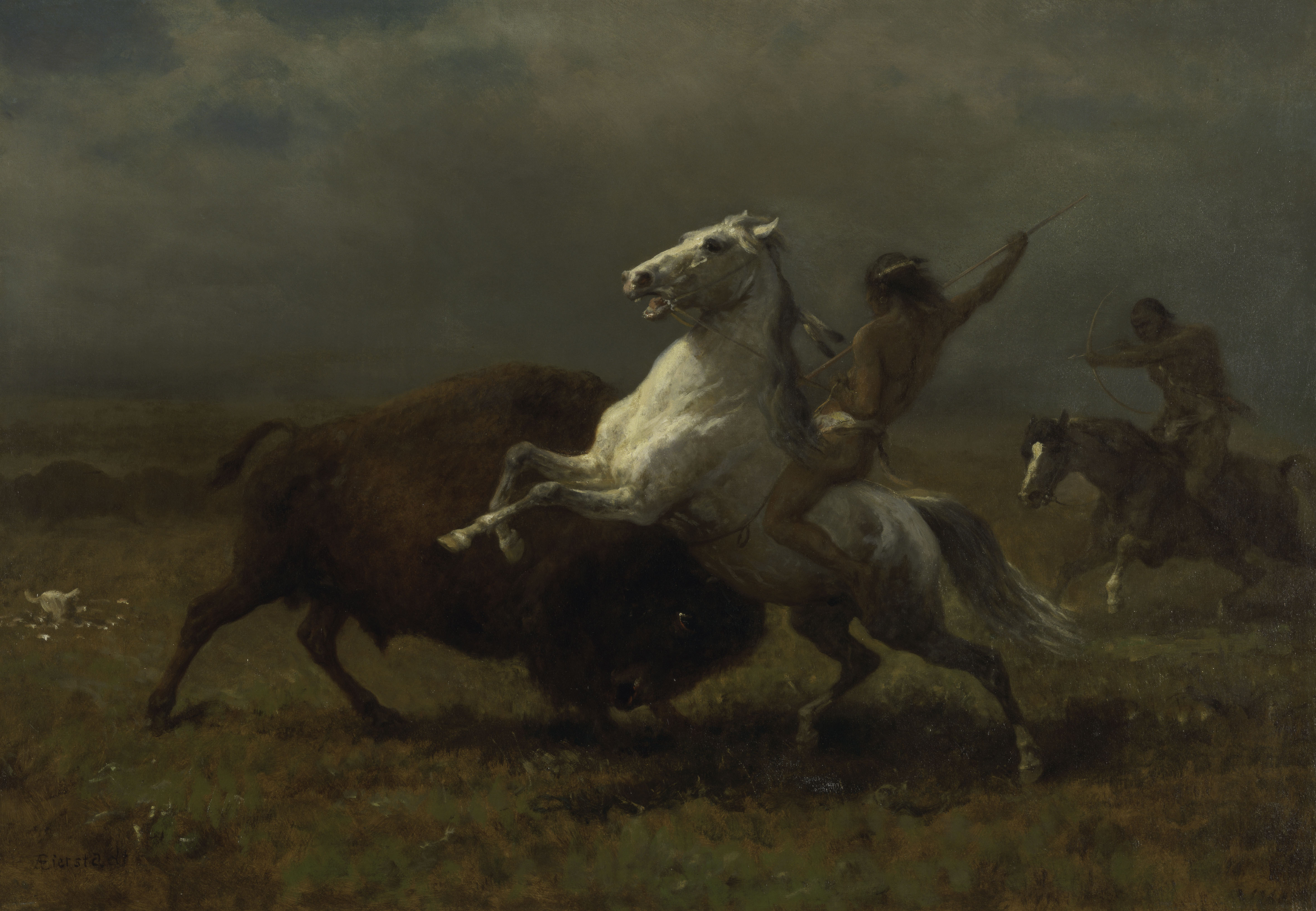Azaleas and Apple Blossoms
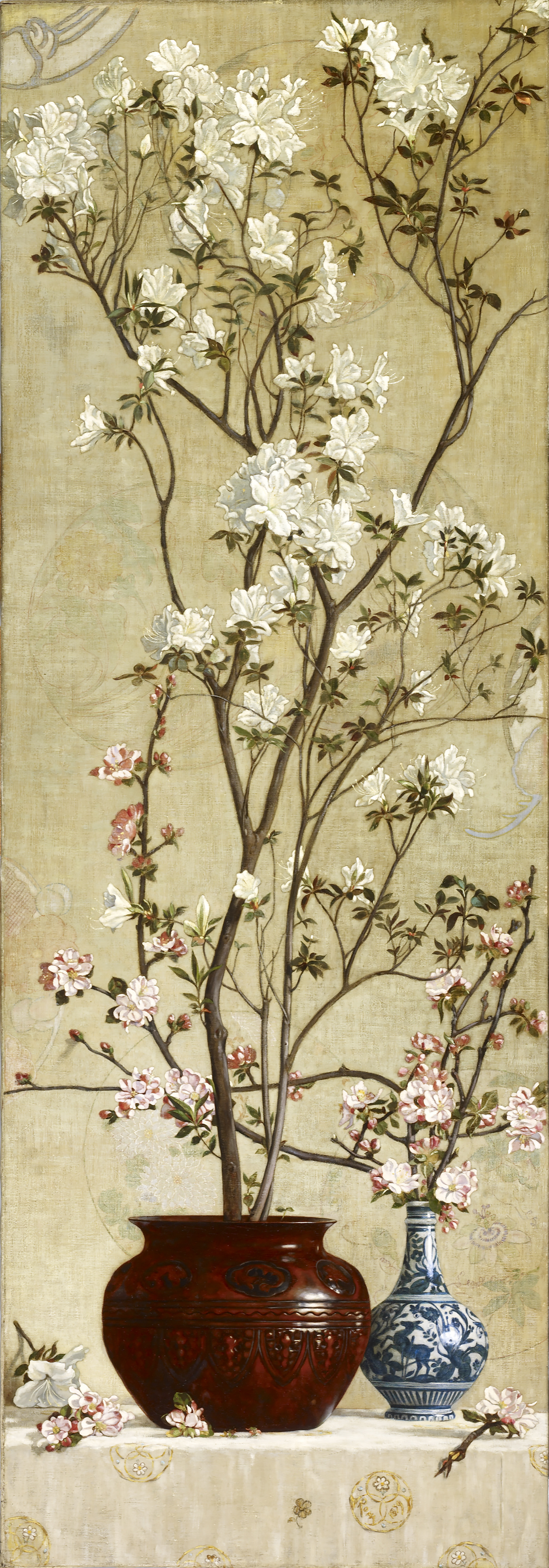
Where do you find cultural intersections in your daily life?
This painting fuses European still-life traditions with Asian objects and aesthetics. The blue-and-white porcelain vase documents the vogue for Chinese ceramics that entranced artists of the Aesthetic Movement, such as James McNeill Whistler. The Asian-influenced aesthetics which inspired these artists are especially resonant in San Francisco, which has historically served as a dynamic site of exchange for Asian/American culture and ideas.
